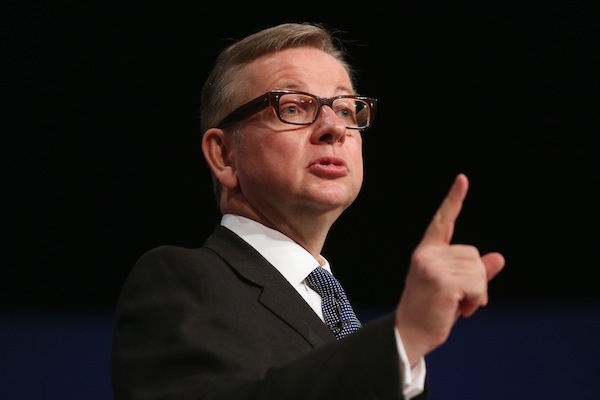Michael Gove is not the only minister to be frustrated by the poor quality of letters drafted for his signature. One minister was horrified to find his reply to the Prime Minister starting ‘Good to here from you’. Another complains that his name is still spelt wrong, three years after he started in the job. But Gove is, probably, the only one who would send a memo to his ministers and civil servants urging them to read ‘George Orwell and Evelyn Waugh, Jane Austen and George Eliot, Matthew Parris and Christopher Hitchens’ to improve their prose.’
The memo contains, what he dubs, Gove’s Golden Rules for writing a letter which I’ve reproduced in my Mail on Sunday column. But the introduction to these rules is also well worth reading. Here it is:
Thank you for your letter of the 17th asking me, on behalf of your colleagues, how I like letters to be drafted.
Letters should be concise, precise and polite.
Concision is itself a form of politeness. Ministers, and taxpayers, lead busy lives. Making points briefly saves everyone time. Of course, on occasion, some factual detail, such as the inadvisability of ending a sentence with a preposition or the folly of using impact as a verb or even the ugliness of behaviours as a usage when behaviour covers a variety of human activity, might require a complex longer sentence. But brevity is always a virtue.
As is precision. So read the original letter to which we are replying. List the points raised or questions asked in your own notebook. Make sure you are precise in your requests to colleagues for the information required to address those points or answer those queries. Do not accept general formulaic replies to precise questions. So, when someone asks why the Secretary of State referred to Mr Men in a speech which discussed history do not send back a standard reply on the national curriculum review, or even the draft history programme of study. Instead, go back to the original speech, check the reference, and provide a full and proper explanation of the reference and the underpinning reasoning for using that reference. The more care that is taken to address the direct questions raised in the letter, the less likely the letter is to be sent back with cross annotations. Time spent on reconnaissance is seldom wasted.
Politeness requires getting the name of the correspondent correct and maintaining a sympathetic tone. It does not require a writing style modelled on Leonard Sachs from “The Good Old Days” or Sir Humphrey in “Yes, Minister”. Using inflated political rhetoric of the “first may I say how much I care about X” is not polite. It is a time-wasting exercise in self-regarding pomposity. So don’t even go there. Instead use direct, clear and vigorous language. Make the paragraph the unit of composition. Devote one paragraph to each topic. And one sentence to each idea within that topic. Ideally, every sentence should introduce the topic of the paragraph. And the concluding sentence should return to, or summarise, that theme. Use the active, not the passive voice. Ministers have decided to increase spending on the poorest children. Poorer children are not having a harder time under this Government. Cut out unnecessary words. For example, rather than writing “the policy that we are introducing is intended to drive a change in behaviours on the part of teachers with respect to the poorest and most disadvantaged children and young people” say “the policy will change how teachers behave towards poorer students”. And make the most emphatic point at the end of a sentence. For example, instead of saying, “the coalition government, which has been an unprecedented historic success, was formed in May three years ago”, write “the coalition government, formed three years ago this May, has been an unprecedented historic success”. The more care you take over elegant composition, the greater the compliment you pay the correspondent.
Some people, of course, prefer bullet points to continuous prose. You should use such a device sparingly. But if it seems appropriate, then remember to keep each point to one idea
Gove’s letter ends with a typically polite Gove sign off:
I hope this reply is helpful.
If I can be of any further help, please don’t hesitate to get in touch. And thank you for your consistent commitment to the highest standards in public service.
Michael
This memo makes it rather tempting to write to the Department of Education to see whether Gove’s Golden Rules are being followed.







Comments